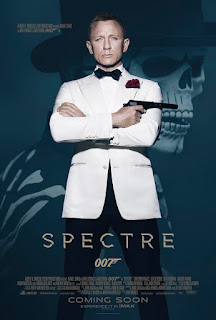Opening this weekend:
The
Peanuts Movie—Charlie Brown is trying to fly a kite in winter, on the
theory that the Kite-Eating Tree will be dormant. The chaos that ensues is
interrupted by the arrival of a new kid moving in across the street from his
house. This turns out be a Little Red-Haired Girl, and once Our Hero gets a
look at her, he’s in love.
The trouble is, we get a look at her too. It’s true that the Little
Red-Haired Girl was shown, very ill-advisedly, in a couple of the later Peanuts
movie and TV cartoons, but she was kept offstage in the strip, and she should
have been here, too. Showing the Little Red-Haired Girl is like showing Maris on
Frasier or Howard’s Mom on The Big Bang Theory or Charlie on Charlie’s Angels or
Carlton the
Doorman on Rhoda.
This feature version of the greatest American comic strip—and one of the
great achievements in 20th-Century literature—is very cute. It’s
visually inventive from beginning to end. It has good values at its core. And
it doesn’t vulgarize its source material, at least not too much—not nearly as
much, certainly, as some of the terrible Peanuts
TV cartoons that were made while Charles M. Schultz was alive, presumably with
his blessing.
But The Peanuts Movie is still
more miss than hit, or at least it was for me. It could be that I’m too close
to Peanuts—the strip is a big part of
why I fell in love with reading, and I still take my volumes down from the
shelf frequently. I’ve been reading and rereading the best vintages of Peanuts (roughly the late ‘50s to the
mid ’70s) all my life, and this movie, produced by Craig Schultz (son of
Charles) from a story of his devising, doesn’t feel like Peanuts to me. It’s almost Peanuts.
The misstep with the Little Red-Haired Girl isn’t the only one, alas. There’s
too much rich texture—to Lucy’s hair, to Charlie Brown’s shoes, to the
countryside over which Snoopy flies in search of the Red Baron. Peanuts was an austere world of lines
and dots and stock phrases from which Schultz wrung an astonishing half-century’s
worth of variations; this movie tries to fill in the details he let our minds
fill in.
More disappointingly, The Peanuts
Movie turns Charlie Brown from a mythic figure—a loser who strives mightily
against his fate as a loser, and doesn’t overcome it—into a standard kids-movie
underdog who triumphs. It’s true that he triumphs for the best of reasons—his
selflessness and honesty—but it still robs him of his neurotic complexity and
his pained, unrecognized heroism.
“Winning is great,” Schultz once observed, “but it isn’t funny.” The unflinching
moral of Peanuts is that some people really are born losers, and that this
sucks for them, but it doesn’t mean that their lives are without value. The
first Peanuts movie, 1969’s A Boy Named Charlie Brown, ended on this note, but
it’s not the sort of thing that the makers of a big-budget contemporary animated
movie can embrace.
This, maybe, is why the meandering story lacks tension and emotional weight.
When the Charlie Brown of the strip or the earlier TV cartoons said “Rats!” or
was told “Boy, are you stupid, Charlie Brown!” it landed like a blow. The Peanuts Movie isn’t a disgrace, but
it pulls its punches. It’s in 3-D, but it has less depth than a line drawing.
Spectre—James
Bond, it could be argued, is sort of the anti-Charlie Brown: confident,
assured, decisive, in command, and always a winner with the ladies, Red-Haired
and otherwise. It’s only since Daniel Craig took over the role that the Bond
movies have begun to seriously explore the idea that he’s no less neurotic or
unhappy for all that.
This new one takes 007 from Mexico City to Rome to Austria
to Tangier and back to London,
chasing down a final tip from the late M (Judi Dench) that leads to an old
enemy (Christoph Waltz). Meanwhile the new M (Ralph Fiennes) is struggling to
keep a bureaucrat from shutting down the Double-0 program and, incidentally,
turning the world into one big cyber-surveillance police state. Q (Ben Whishaw)
and Moneypenny (charming Naomie Harris) get caught up in the intrigue this time
too.
Watching the old Bond pictures, with their excesses and chauvinisms, used to
feel like a Paleolithic indulgence—like letting yourself enjoy something that
was bad for you, and probably bad for the world. The Bonds featuring Craig,
with his wearily amused old-shoe face and his effortless poise, seemed to be
trying for more emotional and moral depth.
Until this one, that is. Despite the relevance of the supposed theme to
current civil rights concerns, these are old-fashioned Bond
antics—preposterously overscaled set-piece action scenes, women succumbing to
007’s charms, urbane courtesies between Bond and his enemies. It’s also way
overlong.
Having said that, I mostly enjoyed Spectre
anyway. Director Sam Mendes doesn’t ask us to take the proceedings too
seriously—though it’s less overtly facetious, it’s not much less
cornball than the Roger Moore Bonds—so I just enjoyed it for its old-fashioned
movie serial silliness.
Also, Monica Bellucci appears as an assassin’s widow with whom Bond hooks up. It’s a brief role, but a little Monica Bellucci is better than no Monica Bellucci, I
always say.
Plus, the title sequence features a really cool octopus.
Friday, November 6, 2015
BROWN. CHARLIE BROWN.
Subscribe to:
Post Comments (Atom)




Thank you Mark, as always!!
ReplyDeleteThanx as always for reading me!
ReplyDeleteAnd thanks to both of you for just being you!!
ReplyDeletedg